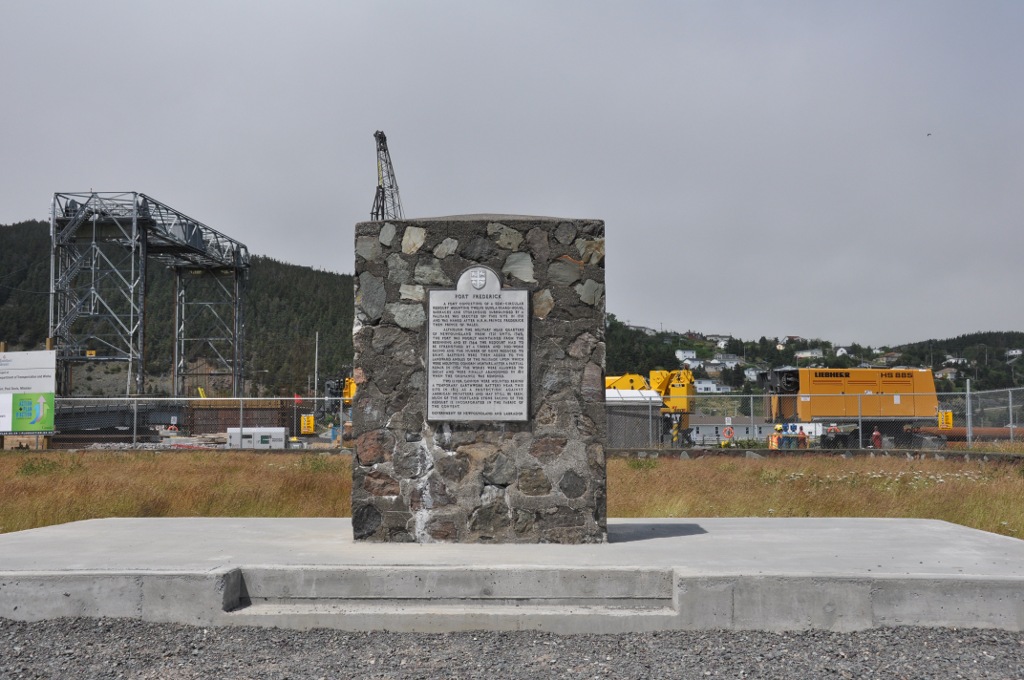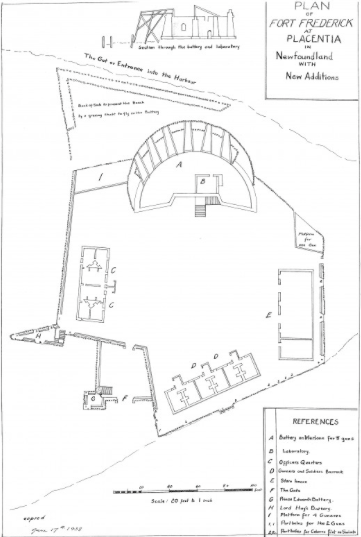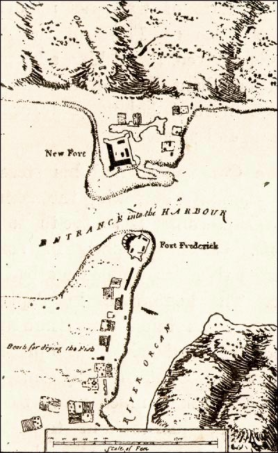Fort Frederick (Newfoundland) on:
[Wikipedia]
[Google]
[Amazon]
 Fort Frederick was a British
Fort Frederick was a British  During the
During the 
Fort Frederick Archaeology Site placentia.ca
Fort Frederick historicplaces.ca
Fort Frederick Municipal Heritage Site heritagenl.ca
{{coord, 47.2493, -53.9617, type:landmark_region:CA, display=title Military history of Newfoundland Military forts in Newfoundland and Labrador
 Fort Frederick was a British
Fort Frederick was a British redoubt
A redoubt (historically redout) is a fort or fort system usually consisting of an enclosed defensive emplacement outside a larger fort, usually relying on earthworks, although some are constructed of stone or brick. It is meant to protect soldi ...
that was built to help fortify their acquisition of Placentia in Newfoundland Colony
Newfoundland Colony was an English and, later, British colony established in 1610 on the island of Newfoundland off the Atlantic coast of Canada, in what is now the province of Newfoundland and Labrador. That followed decades of sporadic English ...
. Under the command of Samuel Gledhill, it served as the military headquarters for Newfoundland from 1721 to 1746. There was a report that the Mi'kmaq
The Mi'kmaq (also ''Mi'gmaq'', ''Lnu'', ''Miꞌkmaw'' or ''Miꞌgmaw''; ; ) are a First Nations people of the Northeastern Woodlands, indigenous to the areas of Canada's Atlantic Provinces and the Gaspé Peninsula of Quebec as well as the northe ...
were involved in a raid of Placentia during Father Rale's War
Dummer's War (1722–1725) is also known as Father Rale's War, Lovewell's War, Greylock's War, the Three Years War, the Wabanaki-New England War, or the Fourth Anglo-Abenaki War. It was a series of battles between the New England Colonies and the ...
, in which they were said to have killed 200 English. Governor Drummer did not believe the report.
By the 1740s, the British began construction of New Fort, which overlay the former Fort Louis. During King Georges War
King George's War (1744–1748) is the name given to the military operations in North America that formed part of the War of the Austrian Succession (1740–1748). It was the third of the four French and Indian Wars. It took place primarily in ...
, the Mi’kmaq militia from Ile Royal raided various British outposts in Newfoundland in August 1745. They attacked several British houses, taking 23 prisoners. The following spring the Mi’kmaq began to take 12 of the prisoners to a rendez-vous point close to St. John’s, en route to Quebec. The British prisoners managed to kill their Mi’kmaq captors at the rendez-vous site near St. John. Two days later, another group of Mi’kmaq took the remaining 11 British prisoners to the same rendez-vous point. Discovering the fate of the Mi’kmaq captors, the other Mi’kmaq killed the remaining 11 British prisoners.
 During the
During the French and Indian War
The French and Indian War (1754–1763) was a theater of the Seven Years' War, which pitted the North American colonies of the British Empire against those of the French, each side being supported by various Native American tribes. At the ...
, Governor Thomas Graves was forced to temporarily move to Placentia following the French victory in the Battle of Signal Hill
The Battle of Signal Hill was fought on September 15, 1762, and was the last battle of the North American theatre of the Seven Years' War. A British force under Lieutenant Colonel William Amherst recaptured St. John's, which the French had sei ...
at St. John's. Fort Frederick was partially repaired.

See also
*Castle Hill, Newfoundland and Labrador
Castle Hill is an area containing the remains of both French and British fortifications, overlooking the town of Placentia ( French: ''Plaisance'') in Newfoundland and Labrador, Canada. The site was originally established in order to protect ...
References
External links
Fort Frederick Archaeology Site placentia.ca
Fort Frederick historicplaces.ca
Fort Frederick Municipal Heritage Site heritagenl.ca
{{coord, 47.2493, -53.9617, type:landmark_region:CA, display=title Military history of Newfoundland Military forts in Newfoundland and Labrador